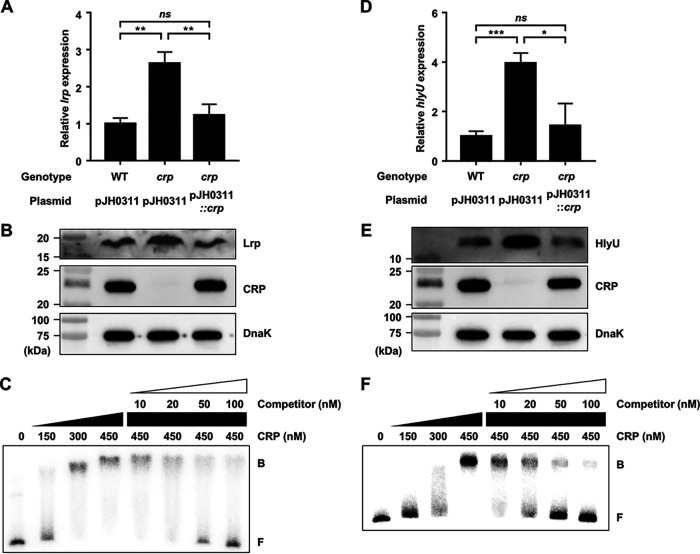FIG 8.
CRP represses the expression of lrp and hlyU by directly binding to their upstream regions. (A, B, D, and E) Total RNAs and proteins were isolated from the V. vulnificus strains grown to an A600 of 0.5 and used to determine the lrp and hlyU transcript and Lrp, HlyU, CRP, and DnaK protein levels. (A and D) The transcript levels of lrp (A) and hlyU (D) were determined by qRT-PCR analyses, and each transcript level in the wild type was set at 1. Error bars represent the SD. Statistical significance was determined by the Student’s t test (***, P < 0.0005; **, P < 0.005; *, P < 0.05; ns, not significant). (B and E) The cellular levels of Lrp, HlyU, CRP, and DnaK (as an internal control) were determined by Western blot analysis. Molecular size markers (Bio-Rad) are shown in kilodaltons. WT (pJH0311), wild type; crp (pJH0311), crp mutant; crp (pJH0311::crp), crp complemented strain with pKK1502. (C and F) A 424-bp DNA probe of the lrp upstream region (C) or a 572-bp DNA probe of the hlyU upstream region (F) was radioactively labeled and then incubated with increasing amounts of CRP as indicated. For competition analysis, various amounts of the same but unlabeled DNA fragment were used as a self-competitor and added to the reaction mixture containing the 5 nM labeled DNA before the addition of 450 nM CRP. The DNA-protein complexes were separated by electrophoresis. B, bound DNA; F, free DNA.

